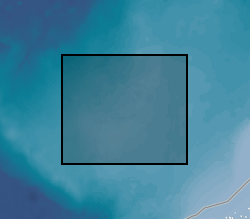Dyke-induced fault measurements and predicted dyke properties offshore NW Australia (NERC Grant NE/R014086/1)
Fault analyses used to estimate underlying dyke properties, imaged in 3D seismic reflection data. The seismic reflection data are located offshore NW Australia and image a series of Late Jurassic dykes and overlying dyke-induced normal faults; these structures occur within a sedimentary basin and are now buried beneath several kilometres of rock. The specific seismic reflection dataset used for this study so far is the Chandon 3D survey, which is freely available through https://www.ga.gov.au/nopims. Other 3D seismic surveys (e.g., Glencoe) near Chandon will be used in due course to extend the study area. Analyses of these faults uses an array of point pairs, defined by X, Y, and Z co-ordinates, that mark where certain sedimentary beds are intersected by the fault in its footwall and hanging wall. Mapping of these points every 125 m along each studied fault, for 11-14 sedimentary horizons, was conducted using Petrel seismic interpretation software. From the footwall and hanging wall point pairs, the throw, heave, displacement, and dip of each fault was calculated. By measuring distances between corresponding point pairs on opposing faults, graben width properties and estimated down-dip fault continuations were calculated. The expression of dyke-induced faults observed at the surface in active volcanic areas is often used to estimate dyke location, thickness (expected to roughly equal the heave on overlying faults), and upper tip depth (expected to occur where overlying, oppositely dipping faults meet; i.e. the point of the ‘V’). This study represents the first time natural dyke-induced faults and underlying dykes have been imaged in 3D and quantitatively studied. The dataset presented here allows hypotheses concerning relationships between dyke-induced fault geometries and dyke properties to finally be tested, and provides insight into normal fault kinematics; this will be useful to structural geologists and volcanologists.

dataset
:
http://data.bgs.ac.uk/id/dataHolding/13607852
English
Geoscientific information
GEMET - INSPIRE themes, version 1.0:
BGS Thesaurus of Geosciences:
Grabens
Fault geometry
NGDC Deposited Data
Dykes
Faults
Seismic reflection surveys
Free:
Free:
NERC_DDC
112.0000,
-20.7500,
114.0000,
-19.0000
EXMOUTH PLATEAU [id=924210]
creation: 2021-12-03
2018-12-03
-
2021-12-03
vector
University of Leeds
Craig Magee
School of Earth and Environment,
Leeds,
LS2 9JT
email:
not available
Role: originator
University of Leeds
Craig Magee
School of Earth and Environment,
Leeds,
LS2 9JT
email:
not available
Role: principal investigator
University of Leeds
Victoria Love
Leeds,
LS2 9JT
email:
not available
Role: originator
British Geological Survey
Enquiries
email:
not available
Role: distributor
British Geological Survey
Enquiries
email:
not available
Role: point of contact
Data Quality
To provide a framework for the fault analysis, 11-14 reflections corresponding to sedimentary beds were mapped across areas of dyke-induced faults; these horizons mapped are all offset by dyke-induced faults. The reflections picked were selected based on ease of interpretation across the desired area and to ensure a good spatial resolution to the data. Mapping was conducted in Petrel seismic interpretation software on inlines and crosslines spaced 125–250 m apart, although some horizons were autotracked in 3D. Horizon surfaces were generated from these mapped grids. Where the surfaces intersected dyke-induced faults, points were mapped on seismic lines orthogonal to the fault strikes every 125 along strike to define footwall and hanging wall cut-offs. The X, Y, and Z co-ordinates of all cut-off points was exported from Petrel and collated for each horizon using a bespoke python script that depth-converted their Z values (using data from Chandon-1, Chandon-2, Chandon-3, Investigator-1, and Yellowglen-1 borehole checkshots; https://www.ga.gov.au/nopims) and also calculated fault dip, throw, heave, and displacement between the pairs. These data were then passed through other bespoke scripts to: (1) collate all cut-off data for each fault; and (2) identify opposing cut-off pairs along the dyke-induced graben to calculate its width and predict the depth to the dyke top. These predictions were compared to depth-converted measured depths of dyke upper tips mapped in the seismic reflection data.
INSPIRE Implementing rules laying down technical arrangements for the interoperability and harmonisation of Geology
Commission Regulation (EU) No 1089/2010 of 23 November 2010 implementing Directive 2007/2/EC of the European Parliament and of the Council as regards interoperability of spatial data sets and services
Constraints
The copyright of materials derived from the British Geological Survey's work is vested in the Natural Environment Research Council [NERC]. No part of this work may be reproduced or transmitted in any form or by any means, or stored in a retrieval system of any nature, without the prior permission of the copyright holder, via the BGS Intellectual Property Rights Manager. Use by customers of information provided by the BGS, is at the customer's own risk. In view of the disparate sources of information at BGS's disposal, including such material donated to BGS, that BGS accepts in good faith as being accurate, the Natural Environment Research Council (NERC) gives no warranty, expressed or implied, as to the quality or accuracy of the information supplied, or to the information's suitability for any use. NERC/BGS accepts no liability whatever in respect of loss, damage, injury or other occurence however caused.
There are no restrictions on the use that may be made of the dataset, although an appropriate copyright acknowledgement must be made when any part of the dataset is reproduced. Either no third party data / information is contained in the dataset or BGS has secured written permission from the owner of any third party data / information contained in the dataset to make the dataset freely available without any use constraints - inclusion of any third party data / information will affect the copyright acknowledgement that needs to be made.
licenceOGL
Metadata about metadata
d28b8581-8e0f-2a6d-e054-002128a47908
British Geological Survey
Environmental Science Centre,Keyworth,
NOTTINGHAM,
NG12 5GG,
United Kingdom
tel: +44 115 936 3100
email:
enquiries@bgs.ac.uk
Role: point of contact
2024-04-24
